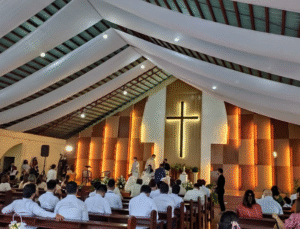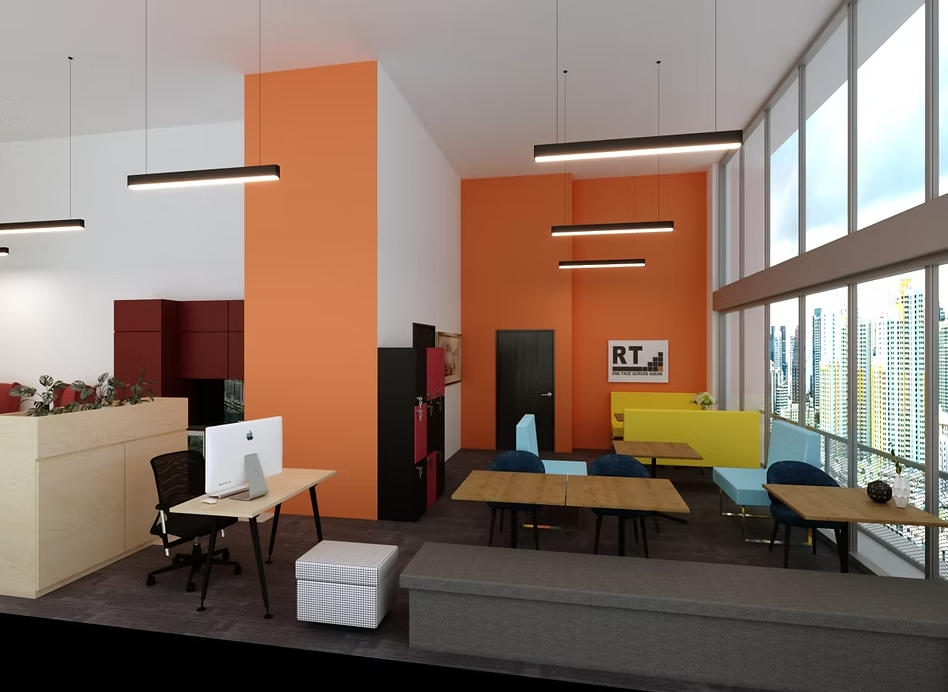Understanding Commercial Interior Design
Interior design for commercial spaces is more than just decorating a building. It involves creating functional, aesthetically appealing environments that reflect a company’s brand and meet the needs of employees and clients alike. Unlike residential design, commercial design must consider factors like workflow, customer engagement, and regulatory compliance. A well-designed commercial space can significantly enhance productivity, boost employee morale, and influence how clients perceive a business. It’s essential to balance style with practicality, ensuring that each area is both visually appealing and functional. Every commercial space, from offices to retail outlets, requires a tailored approach that considers the unique purpose of the environment. The goal is to create spaces that are memorable, efficient, and adaptable to evolving business needs.
Key Principles of Effective Commercial Design
Effective commercial interior design combines functionality, aesthetics, and brand identity. Proper space planning is crucial for workflow optimization, ensuring employees can work efficiently without feeling cramped. Lighting plays a significant role in shaping mood and enhancing productivity, while the right color schemes can influence emotions and reinforce a brand’s identity. Furniture choices must balance comfort, durability, and style, accommodating the needs of employees, customers, or guests. Sustainability is increasingly important, with eco-friendly materials, energy-efficient lighting, and recycled furniture becoming standard considerations. Acoustics also matter in commercial environments, as noise control improves concentration and customer experience. Integrating technology seamlessly into the design ensures the space remains modern and operationally effective.
Types of Commercial Spaces and Design Approaches
Commercial spaces vary widely, each requiring a unique design strategy. Offices benefit from open layouts to encourage collaboration, but private areas are necessary for focus and confidential work. Retail stores need designs that maximize customer flow and product visibility while creating an immersive shopping experience. Restaurants and cafes rely heavily on ambiance, seating arrangements, and lighting to influence how patrons feel and behave. Hotels and hospitality spaces must balance luxury, comfort, and operational efficiency, ensuring guests have a positive and memorable stay. Healthcare centers prioritize safety, accessibility, and a calming environment to support patient well-being. Even industrial or coworking spaces require thoughtful layout planning to enhance functionality while maintaining an inviting aesthetic. Every commercial environment has unique requirements, making specialized interior design essential.
Trends Shaping Commercial Interior Design
Modern trends in commercial interior design reflect a shift toward flexibility, technology integration, and sustainability. Minimalist and modern designs continue to dominate, emphasizing clean lines and uncluttered spaces. Biophilic design, which brings natural elements indoors, is gaining popularity for its positive effects on well-being and creativity. Smart technology, including automated lighting, climate control, and collaborative tools, is becoming integral to functional commercial spaces. Flexible layouts allow businesses to adapt quickly to evolving operational needs, especially in coworking spaces or dynamic office environments. Sustainable materials and energy-efficient design practices are now expected, reducing environmental impact while enhancing corporate responsibility. Companies increasingly value designs that reflect their brand identity, creating spaces that leave a lasting impression on employees and visitors alike.
Challenges in Commercial Interior Design
Commercial interior design is not without its challenges. Achieving the perfect balance between aesthetics and functionality often requires careful planning and professional expertise. Budget constraints can limit material choices, lighting options, or layout flexibility, making prioritization essential. Every design must reflect the company’s brand while remaining practical for daily operations. Compliance with safety regulations, accessibility standards, and building codes adds another layer of complexity. Projects often involve coordination between multiple contractors, designers, and stakeholders, which can extend timelines. Incorporating new trends while maintaining a timeless design requires strategic foresight. Despite these challenges, well-executed commercial design can transform spaces, enhance business performance, and create lasting impressions.
Hiring an Interior Design Consultant for Commercial Spaces
Engaging a professional interior design consultant can significantly impact the success of a commercial project. Consultants provide expertise in space planning, material selection, and trend integration, ensuring the design meets both aesthetic and functional goals. They assess workflow, employee needs, and customer interactions to create efficient layouts. Collaborating with a consultant allows businesses to manage timelines, budgets, and contractor communication more effectively. Consultants bring experience with regulatory compliance, safety standards, and accessibility requirements, reducing potential risks. They also help incorporate technology and sustainable practices seamlessly into the design. Investing in a professional consultant often results in a space that is visually appealing, operationally efficient, and aligned with long-term business goals.
Enhancing Business Outcomes Through Design
Thoughtful commercial interior design directly impacts employee performance and customer perception. A well-planned workspace can boost productivity, foster collaboration, and reduce stress among staff. For retail and hospitality businesses, appealing environments attract customers, encourage longer visits, and increase engagement. Efficient layouts optimize operational workflows, reducing wasted space and streamlining business processes. Branding integrated into design helps create memorable experiences, strengthening customer loyalty and recognition. High-quality furniture, lighting, and materials contribute to comfort, safety, and satisfaction. Overall, investing in professional commercial design enhances both employee well-being and business performance, providing measurable returns.
Effective Strategies in Commercial Interior Design
- Optimize space with multifunctional areas and flexible layouts
- Integrate natural light and energy-efficient lighting solutions
- Use color schemes that align with branding and mood goals
- Incorporate ergonomic furniture for comfort and productivity
- Include greenery or biophilic elements for wellness benefits
- Choose durable, sustainable materials for longevity and environmental responsibility
- Implement technology to support operations and connectivity
Frequently Asked Questions
- What is the difference between commercial and residential interior design?
Commercial interior design focuses on functionality, safety, and brand identity, while residential design prioritizes personal comfort and style. Commercial spaces require considerations for workflow, accessibility, and customer experience. - How much does commercial interior design cost on average?
Costs vary widely based on space size, design complexity, materials, and location. On average, budgets can range from moderate renovations to high-end custom designs, with consultants helping allocate funds efficiently. - How long does a commercial interior design project take?
Project timelines depend on scale, complexity, and contractor coordination. Small projects may take a few weeks, while large-scale commercial spaces can take several months from planning to execution. - Can interior design increase business revenue?
Yes. Attractive, functional spaces enhance customer experience, encourage longer visits, and improve employee productivity, indirectly boosting business performance. - What are the key trends in commercial interior design for 2025?
Trends include biophilic design, flexible layouts, sustainable materials, minimalist aesthetics, and smart technology integration to create efficient and appealing commercial spaces.
Takeaway
Interior design for commercial spaces is a strategic investment that goes beyond aesthetics. It influences employee productivity, customer perception, and overall business performance. By focusing on functionality, brand identity, and emerging trends, businesses can create environments that are both visually appealing and operationally effective. Professional consultants and thoughtful design strategies ensure that commercial spaces are adaptable, sustainable, and memorable. Investing in commercial interior design transforms ordinary spaces into impactful environments that support long-term business success.











